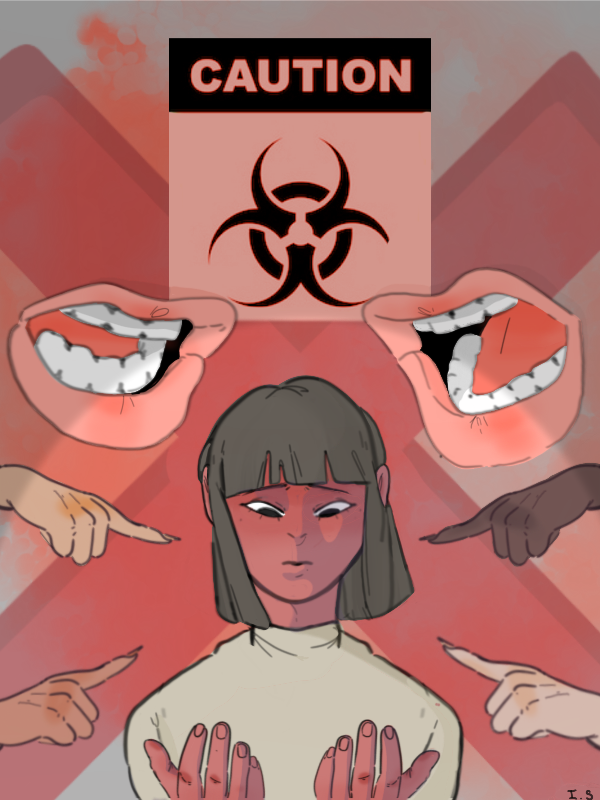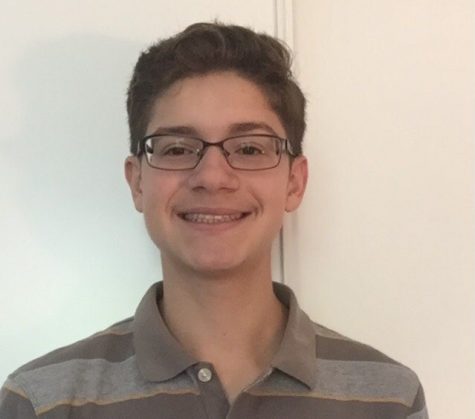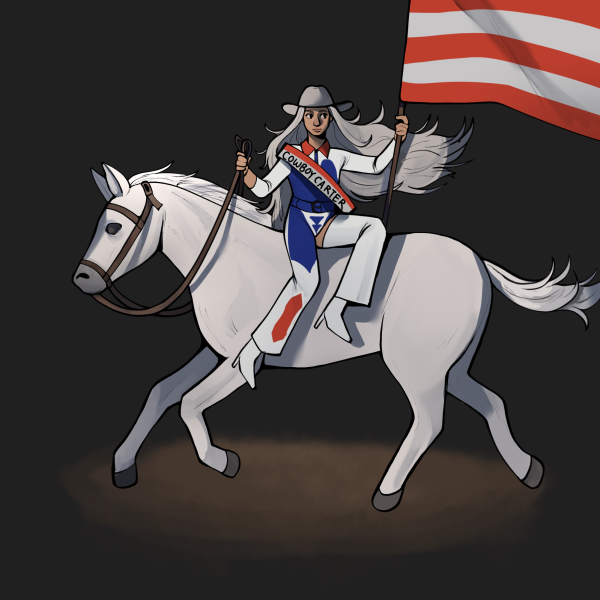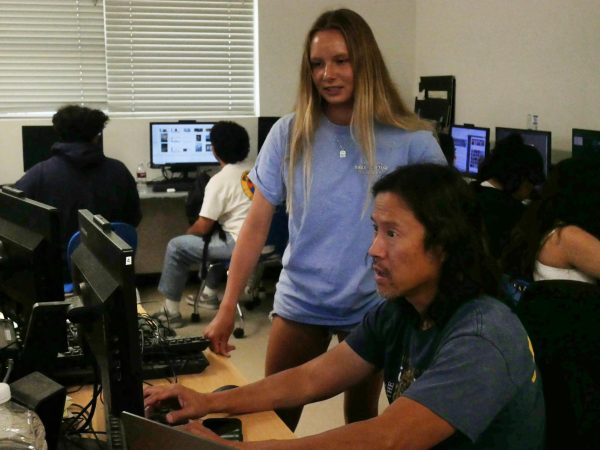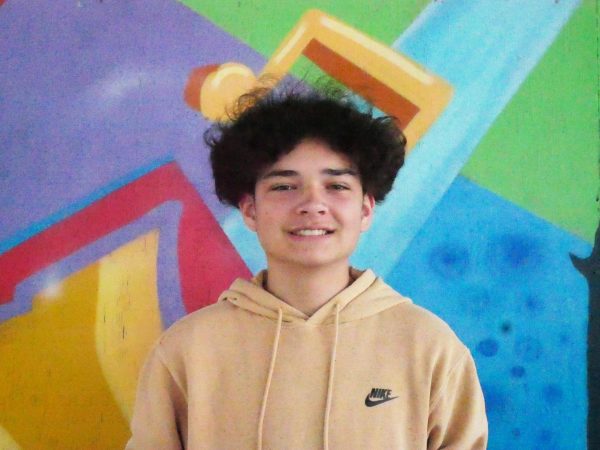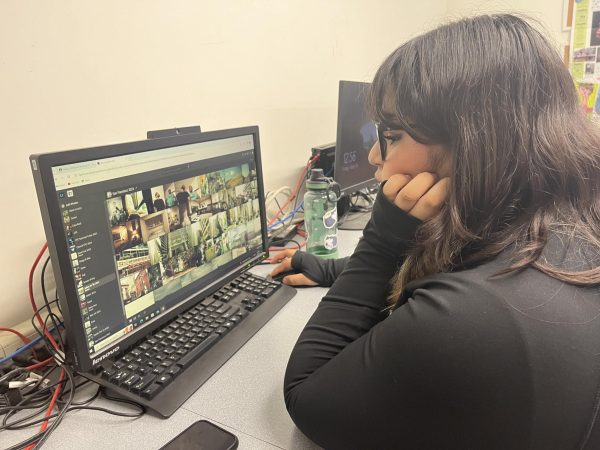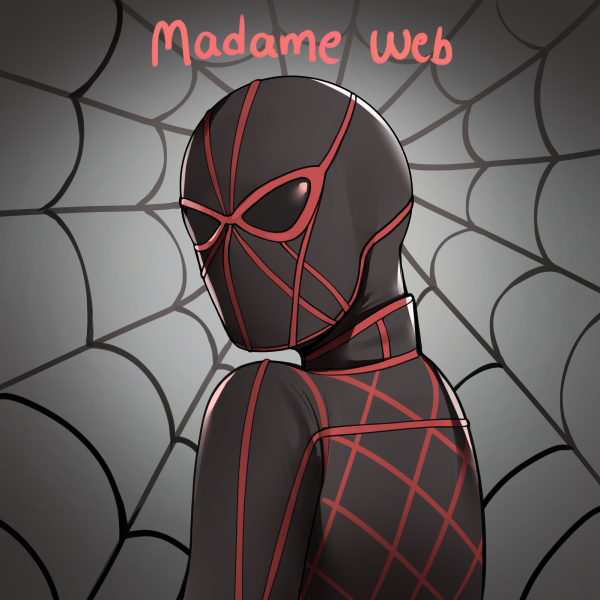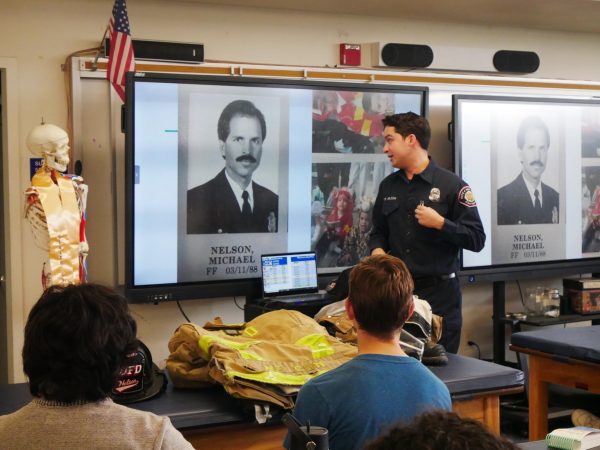BVH artists pick up the pen amidst the pandemic
Junior Isabella Scarda participated in the #USvsHate art competition, creating anti-hate messages through different mediums of art. Scarda wanted to create a drawing to spread awareness about the rising hate crimes against Asian Americans caused by the pandemic.
March 22, 2021
Since the moment mankind first painted on the stone walls in caves, art has been an important piece of everyday life. The COVID-19 pandemic has affected every aspect of life, and artists’ work is no exception. For many Bonita Vista High (BVH) students, art has become an essential part of their life in quarantine.
“Quarantine has actually been really good for me because I’ve had a lot more time to draw now since I’m not going to school in-person,” BVH junior and digital artist Isabella Scarda said. “It’s made me want to pursue art more.”
Since eighth grade, Scarda has liked to draw people, from her friends, characters and herself using a tablet and a stylus. She decided to join Photography and Computer Art teacher Edwin Lim’s AP 2D Art and Design class to enhance her skills and to compete with her friend, junior and digital artist Jena Heinz. Similar to Scarda, Heinz has also found ample time to practice and improve her art skills during the pandemic.
“Before quarantine, drawing full body art made me nervous because I felt like I would mess up,” Heinz said. “Around June or July 2020, I was finally comfortable with what I was doing because I was able to figure out how to draw clothing and do shading. That took a ton of practice, and when I finally figured it out I knew I could move forward. After I hit that point, I’ve been practicing [how to draw] anything ever since.”
BVH junior and photographer Manuel Ovadia has also found motivation from quarantine. Although, he must look at photography in a more creative lens due the lack of social activities and interactions during the pandemic. Ovadia describes that before quarantine he “gravitated towards capturing the daily lives of people inside and outside of school” through photography. Since joining Lim’s Photography course this year, he’s had to submit photos taken at home while preventing repetitiveness.
“Quarantine has actually given me more time to pursue photography because it gave me a new lens into an artistic world,” Ovadia said. “The pandemic has really inspired me to take pictures of practically anything. Whenever I see something, even food, I am tempted to take a picture of it and edit it [to] capture an amazing photo.”
BVH artists have also expressed that pursuing art has helped them express and reflect on the emotions they’ve experienced during the pandemic. Scarda, for instance, created illustrations commenting on female beauty in different ways.
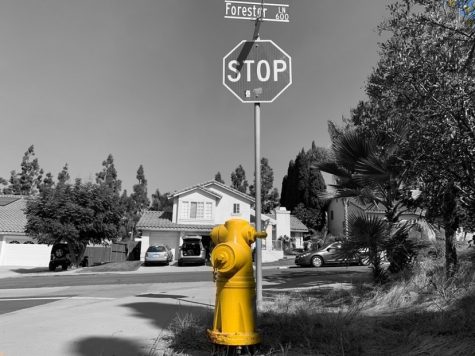
“[I drew] a lady and emphasized how I wanted her to be wider because a lot of drawings have girls with petite bodies, so I wanted her to be wider and more muscular,” Scarda said. “[In another drawing] I wanted to give the character some acne and bumps. I was feeling insecure about my acne, so I wanted to make something that was pretty but still had those imperfections.”
Heinz also mentioned that she reflects her own emotions through digital art. For example, Heinz might draw depressed characters with darker colors when she is feeling down and use brighter colors when she is feeling uplifted, which helps her relax and relieve stress. Similarly, Ovadia also takes some photos in black and white to represent the “saddening consequences of the pandemic.”
“Photography is important during world events like [the pandemic] because they help show the emotions of people during such a hard time and they can be used in the future to reference the pandemic and the year that we have all experienced,” Ovadia said.
Lim gave students the opportunity to directly showcase the social effects of the pandemic through different art competitions. The Young Workers Art Contest was one competition that Lim encouraged students to enter, which both Scarda and Heinz participated in.
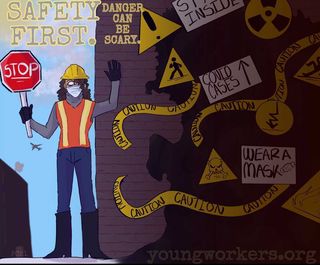
“I [submitted] one drawing about work safety and how kids have to be safe working, especially [since we’re in] a pandemic,” Heinz said. “People need jobs [but,] people are losing their jobs. That’s why this competition really stood out to me.”
Scarda was also able to participate in the #USvsHate competition, where students create anti-hate messages for their communities in any form of media, including art. As someone who is Asian, Scarda felt compelled to participate in order to shed light on the rising xenophobia caused by COVID-19.
“There’s been a lot of hate crimes against Asian Americans like me because of the pandemic, so one of the drawings I made was a xenophobia sketch I made for the contest. I found it therapeutic since it felt good to spread awareness about it,” Scarda said. “I was using my art as an outlet to reflect real world problems, especially ones that are personal to me.”

